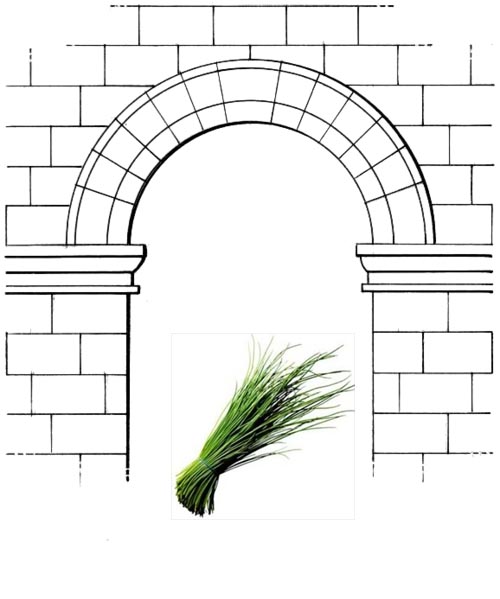BILL– As I related in DRESSAGE Unscrambled, many years ago Major Lindgren was giving a lecture on bits at the National Instructors Seminar. He had a graphic up on the board of all sorts of curb bits, and he asked the group how they would choose one over another. I was on the staff with him, and after the group remained painfully silent, I raised my hand and in my best Gunther Toody fashion interrupted, “Ooh ooh, I know!”
Somewhat bemused and exasperated he said to me, “OK. Why?”
“It depends on the weather,” I said.
He cocked his head, waiting for the rest of it…
“Because,” I finished, “In a storm, any port will do! “
Category Archives: qotm archives

Past Questions of the Month are listed below in chronological order. Just click on the Question to pull up Bill’s Answers.
What is the difference between a lengthening, a medium, and an extended trot?
BILL— I remember riding in a clinic in 1973 on a little OTTB mare whom I was eventing Training Level. These days it would be a First Level test, but back then we did Training 3. Looking to the future I asked the clinician if we could work on lengthenings in the trot. She made a non-committal, disheartened response. And now I know why. The horse was simply not enough on the aids—not enough between leg and hand—not through. Real lengthenings were implausible if not impossible. Without those qualities if you got anything at all, it was likely just to be hurrying. That was also a time when meaningful warmbloods were almost nonexistent in the US, so your horse’s natural movement and cadence were not going to help you very much.
An exercise to develop lengthenings
Can you explain this exercise to me? It’s not in any of the tests.
What do you look for when judging a dressage equitation class?
BILL–That’s an interesting question, especially because just recently I was on the panel that judged the Region 1 Dressage Seat Equitation Semi-Finals. There are two good online resources which speak to this question: The USEF rulebook has a section within the Dressage Division which is quite explicit about what we should look for. In addition there are the Dressage Seat Equitation Guidelines for Competitors and the Guidelines for Judging Dressage Seat Equitation Classes prepared by Lendon Gray which detail what really matters and how we arrive at a numerical score.
How much will a judge count off if my horse grinds his teeth in the test?
BILL– I’m going to fall back on the “That depends” answer here. Without any clear-cut guidelines (unlike the blood on the horse rule), how it is treated depends on the judge’s perception of what all is going on in the horse. There are a few judges (a minority) who will punish the first sound of grinding fairly severely. The majority will look at it in the overall context of the horse’s countenance and how he is behaving. This would apply to tail swishing as well. If his mouth is not gaping, if he doesn’t look rigid or locked, if it doesn’t appear to stem from problems with the rider’s hands, then it usually won’t hurt you too badly. Eric Lette, when he was chairman of the FEI Dressage Committee, spoke of “happy grinding” where other than the noise it made, it seemed to imply no other resistances. He pointed to some horses who ground their teeth when peacefully standing in their own stall. He felt it was unreasonable to punish a horse for a harmless habit.
Has your trainer over faced your horse?
My trainer gave my working first level horse a schooling ride last week. She did lots of bending, counter canter, half passes at trot and canter in a very demanding way. She also worked a couple of changes which involved some rough handling. I rode him yesterday and he seemed very edgy.
Difficulties with Leg Yielding
I’m having difficulty in my leg yield execution. My horse is rushing over and runs through my outside rein. My trainer is telling me to open the outside rein away from his neck and with half halts, let him lead slightly with his shoulders and KICK him over. This makes him rush. I half halt outside but he braces. I thought the recipe for LY was head slightly turned away from the direction of travel but body essentially staying in line. It didn’t go well and my horse was not happy. I was confused.
What do you think about having your test read for you at a show?
Riding a “clean” test without a reader–good!
Do your students ever go to a show without a coach?
I may be wrong but I sense that this question is submitted with a bit of attitude attached. My very short answer is some of my riders go showing alone. Some only go when they have help, either coaching, grooming, videoing, or hand holding. And some play it both ways. In the long run I cultivate their independence, and I’m proud when I’m doing a weekend clinic to be receiving texts and scores from my people around the country.
How important is tracking up when you look at Working Trot?
Back in the Dark Ages of American dressage, circa mid 1960s, the term Working Trot didn’t exist. The judges wanted to see (approximately) the same thing as now, but it was called Ordinary Trot—not as sophisticated in frame or balance as Collected Trot, not as ground covering and scopey as Extended Trot. The problem with the term was that many riders who were new to the sport didn’t read the fine print. They saw the word “ordinary,” looked at their hunter or pleasure horse or trail horse shuffling along, and said to themselves, “His trot is about as ordinary as it gets. This sport is for me!” They were naturally disappointed when the judge gave their performance his thumbs down.
